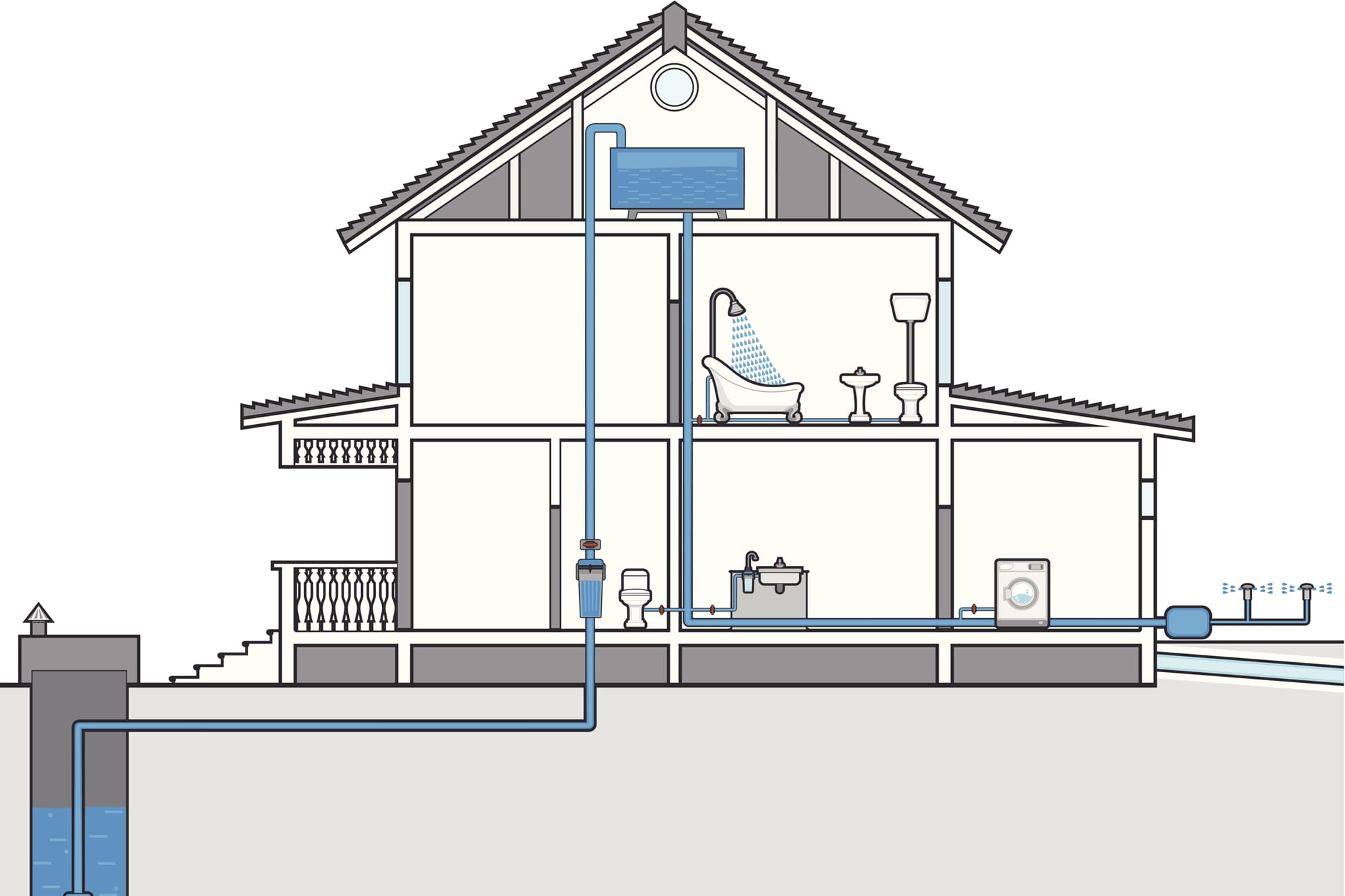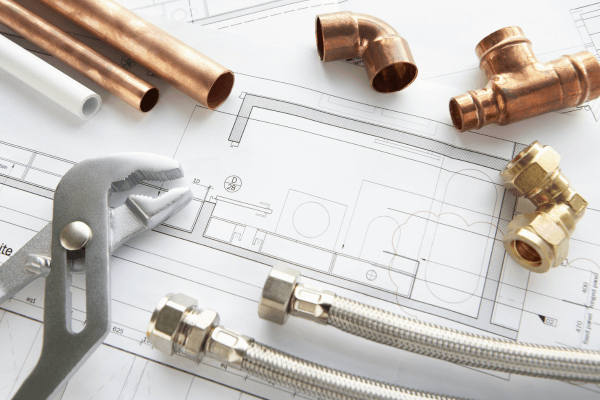The Essential Components of Your Home's Plumbing System
The Essential Components of Your Home's Plumbing System
Blog Article
This post down below in relation to Anatomy of a House: Understanding the Components is highly fascinating. You should give it a look.

Recognizing how your home's pipes system functions is vital for every single property owner. From providing tidy water for drinking, cooking, and showering to securely removing wastewater, a well-kept pipes system is important for your family members's health and comfort. In this detailed overview, we'll explore the intricate network that makes up your home's pipes and offer pointers on upkeep, upgrades, and dealing with typical problems.
Intro
Your home's plumbing system is more than just a network of pipelines; it's an intricate system that ensures you have accessibility to clean water and efficient wastewater removal. Recognizing its parts and how they work together can aid you prevent expensive repair services and make certain every little thing runs efficiently.
Basic Components of a Plumbing System
Pipelines and Tubes
At the heart of your pipes system are the pipelines and tubes that bring water throughout your home. These can be constructed from numerous products such as copper, PVC, or PEX, each with its benefits in regards to durability and cost-effectiveness.
Fixtures: Sinks, Toilets, Showers, etc.
Fixtures like sinks, commodes, showers, and tubs are where water is utilized in your home. Comprehending exactly how these fixtures connect to the plumbing system helps in identifying issues and planning upgrades.
Valves and Shut-off Factors
Valves control the circulation of water in your plumbing system. Shut-off shutoffs are vital during emergencies or when you need to make fixings, enabling you to separate parts of the system without disrupting water circulation to the whole house.
Water Supply System
Main Water Line
The main water line attaches your home to the community water supply or an exclusive well. It's where water enters your home and is dispersed to numerous components.
Water Meter and Stress Regulatory Authority
The water meter measures your water usage, while a stress regulatory authority guarantees that water moves at a risk-free pressure throughout your home's pipes system, preventing damages to pipes and components.
Cold Water vs. Hot Water Lines
Recognizing the distinction in between cold water lines, which supply water straight from the main, and warm water lines, which lug heated water from the water heater, helps in repairing and planning for upgrades.
Water drainage System
Drain Pipes and Traps
Drain pipes lug wastewater away from sinks, showers, and bathrooms to the sewer or septic system. Traps avoid sewer gases from entering your home and likewise trap particles that might cause clogs.
Air flow Pipes
Air flow pipes enable air right into the drain system, avoiding suction that could reduce water drainage and cause catches to empty. Correct air flow is necessary for maintaining the stability of your plumbing system.
Value of Correct Drainage
Making sure appropriate water drainage prevents backups and water damages. Frequently cleaning up drains pipes and preserving traps can stop costly repairs and extend the life of your pipes system.
Water Furnace
Types of Water Heaters
Hot water heater can be tankless or traditional tank-style. Tankless heaters heat water on demand, while containers save heated water for immediate use.
Updating Your Pipes System
Reasons for Upgrading
Updating to water-efficient components or replacing old pipes can enhance water top quality, reduce water bills, and enhance the value of your home.
Modern Pipes Technologies and Their Advantages
Explore innovations like wise leak detectors, water-saving commodes, and energy-efficient hot water heater that can conserve money and reduce environmental effect.
Expense Factors To Consider and ROI
Calculate the in advance prices versus lasting savings when thinking about plumbing upgrades. Lots of upgrades pay for themselves with lowered energy costs and less fixings.
How Water Heaters Attach to the Pipes System
Recognizing just how hot water heater attach to both the cold water supply and hot water circulation lines assists in identifying problems like inadequate hot water or leaks.
Maintenance Tips for Water Heaters
Routinely flushing your water heater to eliminate sediment, checking the temperature setups, and inspecting for leaks can expand its life-span and enhance power performance.
Typical Plumbing Concerns
Leakages and Their Reasons
Leakages can happen because of aging pipes, loosened installations, or high water pressure. Attending to leaks promptly prevents water damage and mold and mildew growth.
Clogs and Clogs
Blockages in drains and commodes are usually brought on by purging non-flushable products or a build-up of oil and hair. Making use of drain screens and being mindful of what decreases your drains can prevent obstructions.
Indicators of Plumbing Problems to Expect
Low water pressure, sluggish drains, foul odors, or uncommonly high water bills are signs of possible pipes problems that need to be attended to immediately.
Plumbing Upkeep Tips
Regular Examinations and Checks
Set up annual plumbing examinations to capture issues early. Try to find signs of leakages, rust, or mineral buildup in taps and showerheads.
DIY Upkeep Tasks
Easy tasks like cleansing faucet aerators, looking for toilet leakages using color tablet computers, or protecting subjected pipelines in cool climates can stop major pipes problems.
When to Call an Expert Plumbing
Know when a plumbing issue calls for expert knowledge. Trying complex fixings without proper knowledge can bring about even more damage and higher fixing costs.
Tips for Reducing Water Use
Straightforward practices like fixing leakages promptly, taking much shorter showers, and running full tons of washing and meals can preserve water and lower your energy bills.
Eco-Friendly Plumbing Options
Take into consideration sustainable plumbing products like bamboo for flooring, which is durable and eco-friendly, or recycled glass for countertops.
Emergency Preparedness
Steps to Take During a Pipes Emergency situation
Know where your shut-off valves lie and how to switch off the water supply in case of a ruptured pipe or significant leak.
Value of Having Emergency Calls Useful
Keep get in touch with details for local plumbing technicians or emergency solutions readily available for fast response during a pipes crisis.
Ecological Impact and Preservation
Water-Saving Fixtures and Home Appliances
Mounting low-flow faucets, showerheads, and toilets can significantly decrease water use without giving up efficiency.
DIY Emergency Situation Fixes (When Suitable).
Short-lived solutions like utilizing duct tape to spot a dripping pipeline or putting a bucket under a dripping faucet can decrease damages up until a professional plumbing gets here.
Final thought.
Understanding the composition of your home's pipes system empowers you to preserve it properly, conserving time and money on repair work. By complying with routine upkeep regimens and remaining notified about modern-day pipes technologies, you can guarantee your plumbing system runs successfully for years to find.
HOW YOUR PLUMBING SYSTEM WORKS
Which Pipes Do What?
Blue lines = fresh water supply entering the building Red lines = hot water supply entering the building Grey lines = pipes carrying waste away from the building and venting pipes carrying gases away from the building (through the roof) YOUR MAIN PLUMBING SYSTEMS
There are two main plumbing systems that support your home s basic plumbing needs one that brings clean water into your home, and one that sends dirty water away from your home. Connected to the toilet, bath, shower, and other faucets in your home, these two systems keep your water flowing in the right directions.
ACCESSING FRESH WATER
Fresh and clean water is brought into your home through the main water supply line . Filtered through one pipe, this water is pressured to flow into the various fixtures in your home at any given time.
This water can be sourced from a well located on your property, a pond or river (mostly cottages), or, as in most cases, from the city s municipal water treatment centre. However, it is important to note that water that is untreated, such as the water siphoned from ponds or rivers, may not be safe to drink. Personal water supplies always need to be treated for hardness and contaminants before consumed.
MUNICIPAL WATER SUPPLIES
Improve taste and odour Remove sediment Eliminate hardness Reduce chlorine COLD WATER SUPPLY VS. HOT WATER SUPPLY
Cold water flows into your home or building through the service line, which then distributes hot or cold water to your fixtures. This line is most commonly run through a central column that runs floor to floor. Hot water runs in short and straight pipes as the longer the pipeline, the more heat that will be lost in the transfer. Having shorter pipes also allows residents to access hot water more quickly.
WASTE WATER SYSTEM
Your wastewater system is divided into two parts pipes that send wastewater away from your home and venting pipes that send sewer gas away from your home. Sewage water travels through pipes that flush the water and waste towards local sewers that are operated and managed by your city or town. Most sewer systems rely on gravity to move the wastewater to where it needs to go.
The further away from your toilet or sink, the larger wastewater pipes become. This allows for waste to be disposed of from various parts of your home or business at once without pipe blockages. The angle and flow of these pipes are also essential for keeping your waste pipes clear of build up.
https://harrisplumbing.ca/how-your-home-plumbing-system-works/

As a serious reader on Exploring Your Homes Plumbing Anatomy, I think sharing that editorial was a smart idea. If you please pause to distribute this entry if you enjoyed it. Thanks for taking the time to read it.
Contact Us Report this page